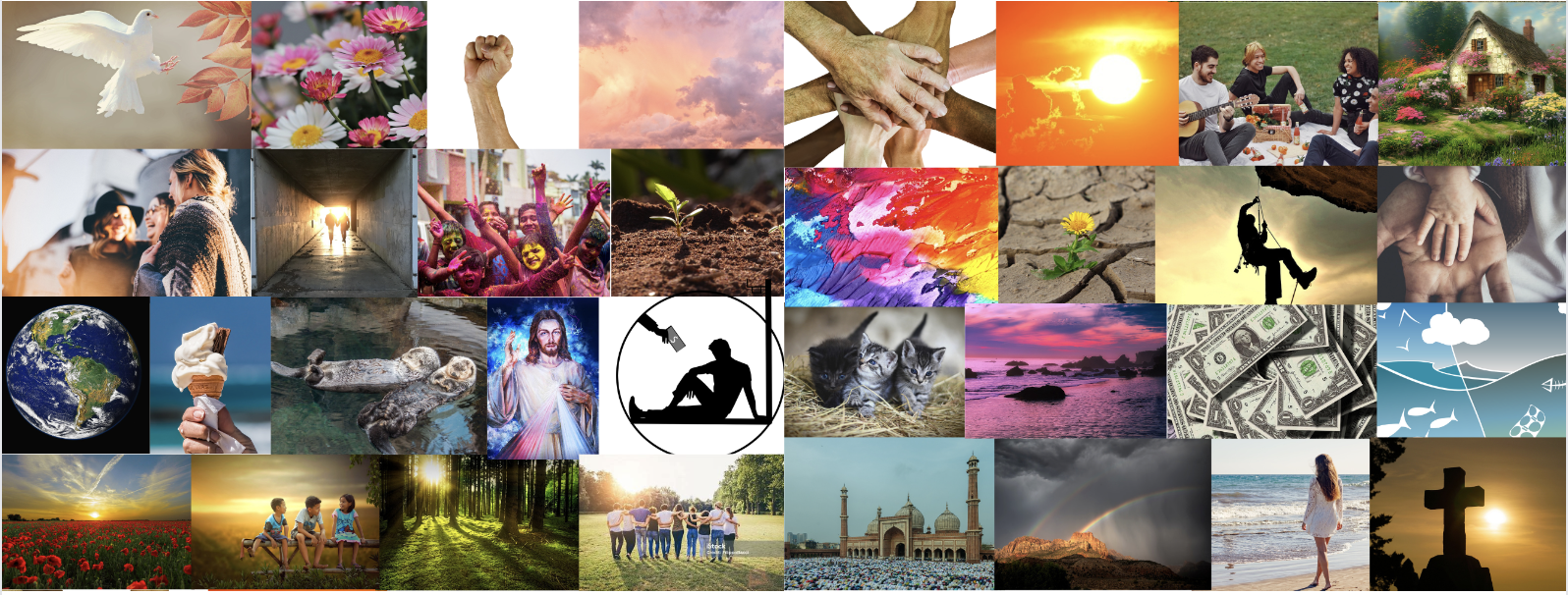Hope and Resilience
Exploring experiences of hope and resilience, to support young people as they face the challenges of the future.

Our Vision
Hope, and the positive outlook and motivation that it fosters, can be a driving force for good health and well-being. This project explores diverse experiences of hope for Australian young people, including the relationship between hope and resilience in different cohorts of participants.
In particular, the project addresses the following questions:
- How hopeful do young Australians feel about their future, specifically across the domains of health, employment, environment, politics, and technology?
- How can hopefulness for the future be enhanced in young Australians?
- What are young Australian’s key hopes for the future?
Project History
This project extends on the results of the 2021 UNICEF Australia report (‘Children’s Voices in a Changing World’), contributing to a more extensive research base on young Australians’ hope in a post-pandemic context.
What impact will this research have?
To support Australian young people in the best possible ways, we need insight into their hopes and dreams. We need to understand the factors that support their hopes for the future, and the barriers that undermine them. We need to listen to them explain how current world events are affecting them, and hear about the key areas of concern they have for their futures. Developing a better understanding of the relationship between hope and resilience is central to supporting young people to overcome the diverse challenges they face in today’s world.
Our Project Plan
PHASE 1: Hope and Resilience in Young Australians
In phase 1 of this project, we surveyed 2,000 Australian young people aged 12–18 to explore perspectives on, and experiences of, hope. The survey took place from October to December 2023 and involved both quantitative and qualitative measures. It was distributed online by Student Edge, Australia’s largest student member organisation.
As part of this project, we also ran a ‘Messages of Hope’ competition (Jan–Feb 2024), inviting young people to share their own ‘Message of Hope’ with us, and with other young people, in their own creative way.
PHASE 2: Imagining the Future and Young People’s Wellbeing and Resilience
Phase 2 of the Hope and Resilience Project builds upon and extends the survey insights generated in Phase 1. Over 18 months, we will deploy qualitative methods (interviews with young people and workshops) and a second survey to further investigate young Australian’s hopes and aspirations for the future, working collaboratively alongside youth co-researchers. We will seek to better understand how young people are imagining the future in relation to key domains such as work, education, relationships and health, what young people need from governments to realise their ideal futures and support their wellbeing and resilience, and how they can be involved in decision-making processes about their futures.
Outcomes
The outcomes of this research will be used to contribute to policy conversations about the needs of young people by highlighting factors that improve their optimism and sense of hope for the future. The outcomes will also be used to develop a positive vision of young people’s priorities across a range of areas, including: climate change, technology, employment, housing, physical health, mental health, relationships, safety, community, lifestyle, equity and discrimination.
The research will generate diverse data and will highlight resilience-promoting factors, which can inform governments when planning measures to support young people as they work towards ideal futures; address anxieties; and take action to build a more resilient world.
The data created through this research will be used to help reassure adults and young people alike that there are things to hope for in our collective futures, and will encourage young people to continue to aspire to positive futures for themselves, their peers, families and communities.
Phase 2 Data Instruments
Hope and Resilience Interview Discussion Guide
Hope and Resilience Survey 2025
Phase 1 Collaboration team
Internal collaborators:
- Professor Amanda Third
- Lilly Moody
- Linda Marsden
- Sarah Bacaller
- Stephanie Hannah
- Louisa Welland
- Shima Sardarabady
- Farzana Chowdhury
- Yehansa Dahanayake
- Dr. Pavithra Rajan
- With additional support from Dr. Haider Mannan
External collaborators/Partners:
The Alannah and Madeline Foundation
Phase 2 Collaboration team
Internal collaborators:
- Professor Amanda Third
- Louisa Welland
- Lilly Tatam
- Dr Ümit Kennedy
- Youth co-researchers: Fiona, Danya Daoud and Aliet Agany.
External collaborators/Partners:
The Alannah and Madeline Foundation
Centre for Multicultural Youth
Project support:
Student Edge (survey distribution)
Funding:
Victorian Government under the auspices of Centre for Resilient and Inclusive Societies
Streams
Enhancing Health and Wellbeing
Period
September 2023 – September 2025
Sustainable Development Goals
The project addresses SDG 3: Ensuring healthy lives and promoting wellbeing for all ages.

Contact:
If you would like to get in contact with the Hope and Resilience team, please email Louisa Welland at l.welland@westernsydney.edu.au.
Image credit
Collage created by Shima Sardarbady
